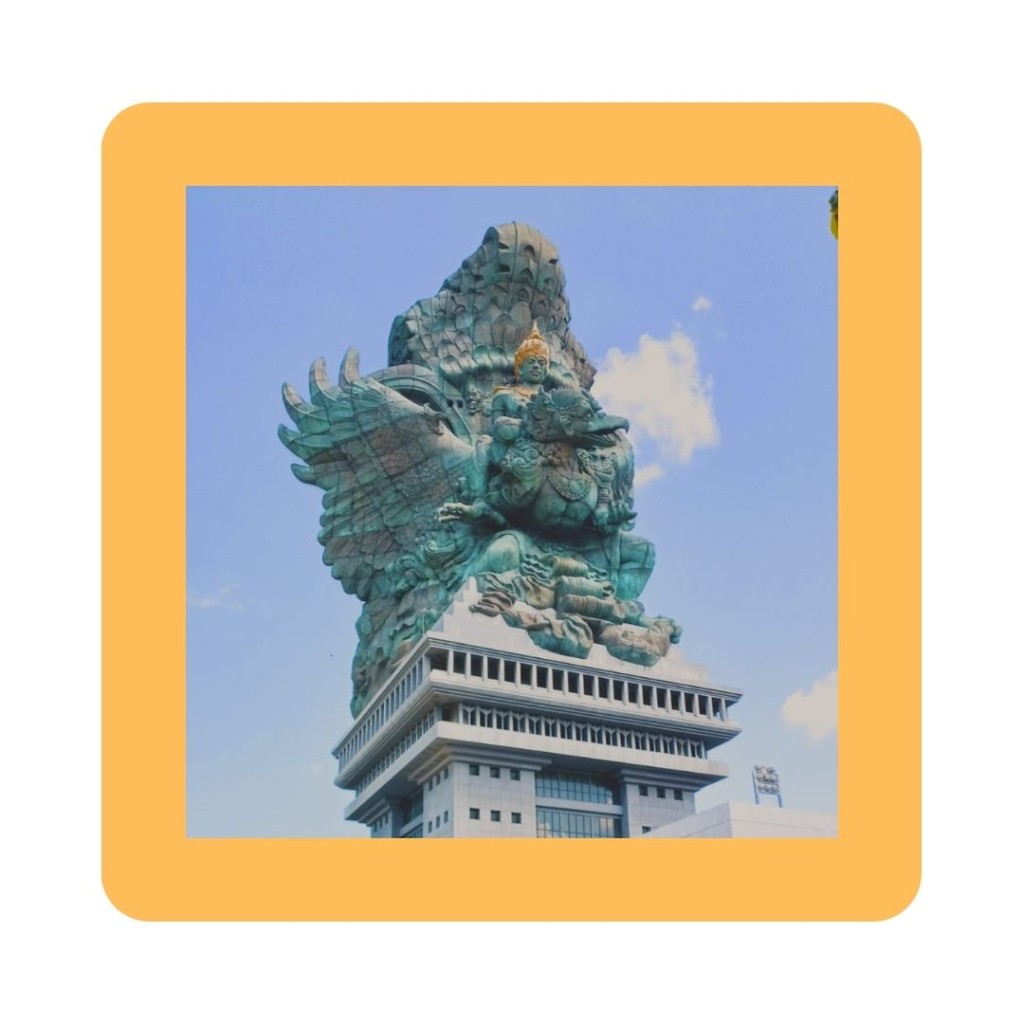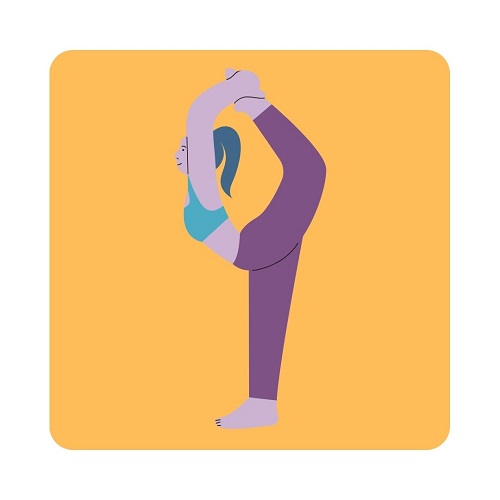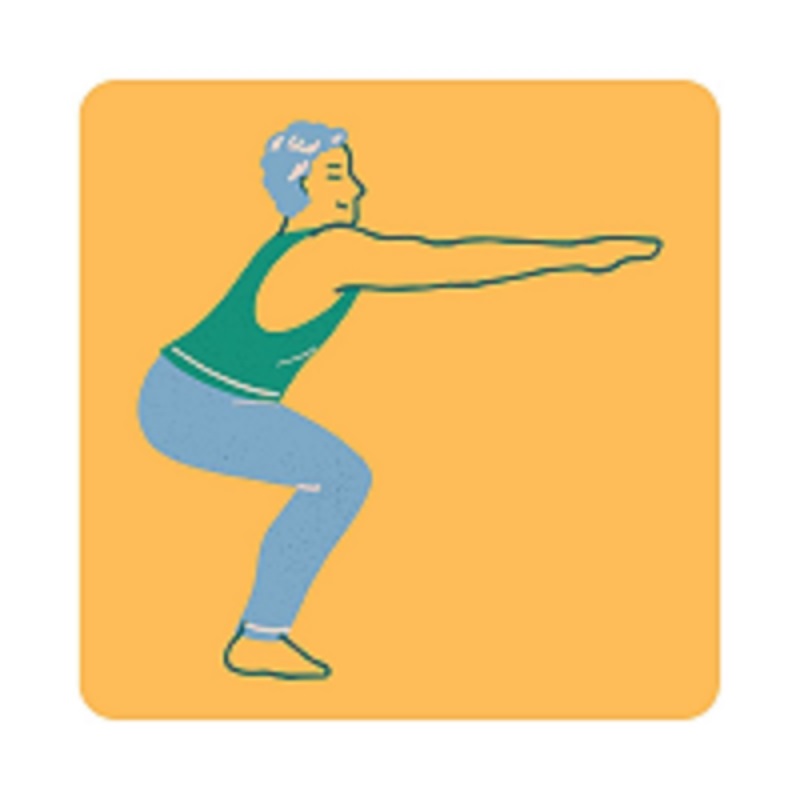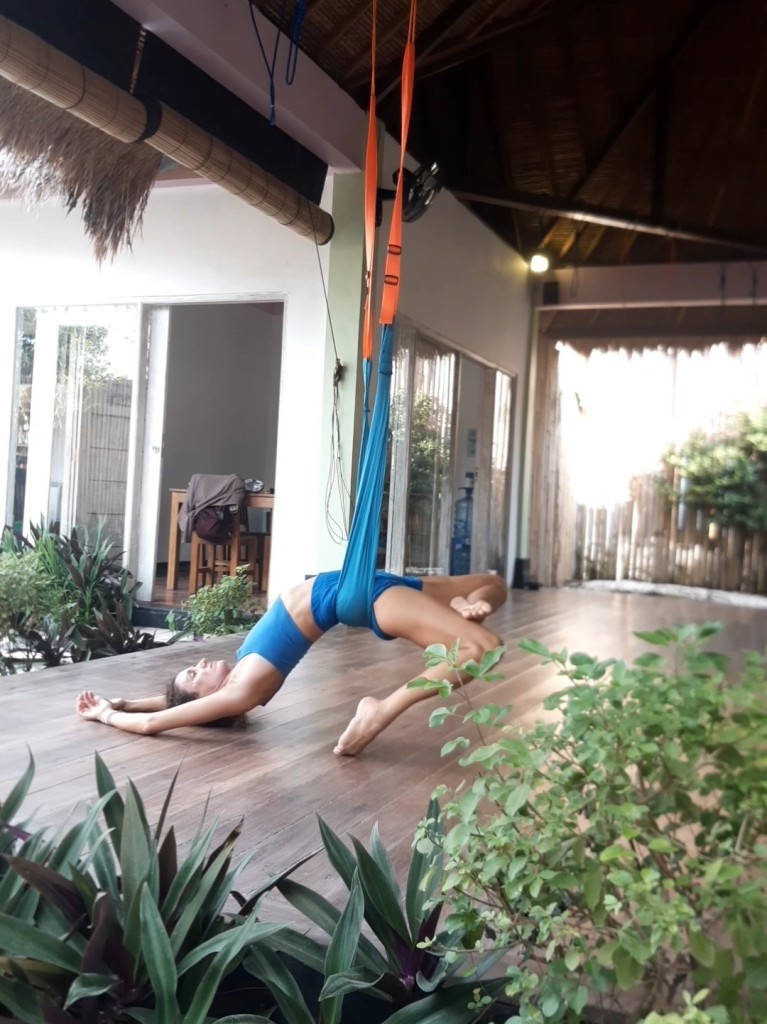Asanas, or yoga poses, are an essential part of this age-old practice that unites mind, body, and spirit.
But have you ever wondered how these poses got their unique names?
The meaning of the asanas is deeply rooted in the rich Hindu mythology.
Some of them carry the name of a mythological figure, deity or animal, connecting the practice of yoga with the ancient stories of India.
Lista de Asanas
Anjaneyasana
Anjaneyasana (also known as Crescent Moon Pose or Low Lunge Pose), is a deeply rooted yoga asana that has deep mythological significance.
Garudasana
The Eagle Pose takes the name of the king of birds, Garuda, a mythical bird, half man and half eagle.
This mythological being, the mount of the god Vishnu, personifies agility and control.
The posture, with arms and legs intertwined, emulates the union of Garuda with Vishnu, encouraging balance and concentration.
Utkatasana
Utkatasana, known as the chair pose, it’s not an easy chair, but more of a throne.
This name has deep mythological roots, alluding to the determination to face challenging situations.
The pose tones the muscles and cultivates patience.
On a deep level, Utkatasana teaches how to find a powerful seat within your pelvis, at the center of your body.
Hindu mythology is full of characters, gods and animals that reflect qualities and characteristics that can be incorporated into the practice of yoga.
Each asana not only works the muscles and flexibility.
It also invites practitioners to connect with the essence of these mythological figures.
The meaning of the asanas
As you delve deeper into your yoga practice, consider researching the names of the asanas to better understand their roots.
This connection to Hindu mythology adds a spiritual and cultural dimension to your practice.
Thus providing a deeper appreciation of the meanings hidden behind each pose.
Ultimately, by practicing these asanas, you are not only moving physically but also exploring an ancient legacy that has stood the test of time.






